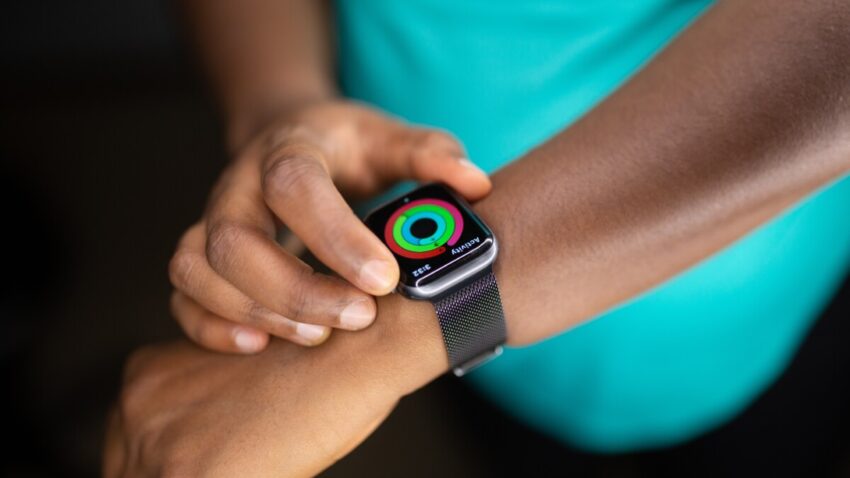The use of wearable devices has skyrocketed over the past few years, with approximately 21% of U.S. adults reporting the use of a smartwatch or wearable fitness tracker. Many of those people use the wearable devices, including clip-on devices, belts, or patches, to track their own health metrics and stay on top of their wellness goals.
Powered by microprocessors and sensors, wearables are capable of receiving, analyzing, recording, and communicating data such as one’s heart rate, oxygen saturation, sleep patterns, workouts, and even electrocardiograms. And thanks to rapidly developing technology, advances in 5G or AI have been incorporated into wearable devices so that continuous monitoring of chronic diseases and fast data transmission can be feasible.
Considering the large pool of data privately collected on a daily basis, it’s hard to ignore the potential advantages of these devices for application in clinical trials. According to clinicaltrials.gov, there are approximately 1,550 trials that are using wearable devices worldwide, with about one-third of them being successfully completed. However, this still only accounts for 2.2% of all trials since 2020, even though more studies could potentially benefit from their use.
Cons of wearable devices in clinical trials
Although wearables allow researchers to track a wide range of parameters and risk factors in real-time, these devices are not required to undergo the same type of safety and effectiveness clinical trials to be approved by the U.S. Food and Drug Administration (FDA) as new pharmaceuticals. In 2019, an FDA announcement stated that consumer wearable devices could be utilized in clinical trials if their use is justified and “fit for purpose.”

Even though the FDA doesn’t prohibit their use in clinical trials, the problems with wearable devices’ efficacy still remain. For instance, studies have suggested a sharp difference in measurement accuracy and data fidelity between clinical and consumer-grade wearable devices. In addition, many of the studies involving the devices are not generalizable given the samples fall into the subset of populat
ions from industrialized and high-income countries with more access to healthcare resources. This can be a problem because the study results can’t be generalized to a more diverse pool of populations.
Another issue with wearable devices lies within the proprietary nature of the algorithms and data ownership. Many wearable manufacturers don’t allow researchers to directly access the raw data and give partially redacted descriptions of the acquisition and processing method. In this case, the accuracy of the data acquired for clinical trials might be compromised.
Finally, there are concerns regarding data security and ownership. Normally, patient data collected during clinical trials fall under the Health Insurance Portability and Accountability Act (HIPAA), which regulates how protected health information can be used and shared. However, consumer-grade devices are regulated differently, where rules pertaining to data protection are largely up to the manufacturers, leading to potential ethical and legal concerns. There are also practical data security constrains for wearables’ data transmission and management since technical vulnerabilities still exist in areas like data encryption or user authentication. Nevertheless, all these potential limitations can be addressed as technology and regulations improve.
Pros of wearable devices in clinical trials
Though currently there are considerable drawbacks, wearable devices still offer clear advantages in terms of data consistency and patient engagement. Clinical trials utilizing the same devices can be conducted across different centers and even continents, which will help with data consistency given proper device usage training is provided. At-home data collection allows for objective real-time data that reflect the patients’ daily activities.

Compared to traditional sporadic clinic visits, this generates a more comprehensive data set, encompassing physiological, movement, and sleep biometrics. In addition, longitudinal data gathered over an extended clinical trial period can offer a solid perspective on the effectiveness of the treatment. Wearables have the added benefit of remote monitoring, thereby decreasing the necessity for frequent in-person visits. They serve to deliver medication reminders and collect information without patients’ input, which result in lower participant dropout rates.
Entering the age of big data and AI, wearable devices are changing the landscape of current clinical trial practices with the depth and width of data collected. It is now easier than ever to incorporate individual data into a large research database for statistical inferences. This will greatly increase the speed of clinical trials while reducing the cost of data acquisition. Pharmaceutical and medical research groups can take advantage of these large data sets and AI tools to effectively recognize adverse effects, optimize their clinical trials, assist with clinical trial participant recruitment, and detect new health metrics.
While wearable devices can’t independently guarantee the success of drugs, their integration can boost the efficiency and effectiveness of the drug development process. Wearable technology has enormous potential to bring more meaningful data collection to clinical trial studies. However, there is still room for improvement to ensure a safe and reliable incorporation that benefits the researchers, patients, and society as a whole. Hopefully, we will witness more technological advancement and regulatory efforts that address the challenges of applying wearable devices to clinical trials.
‑ Samme Xie